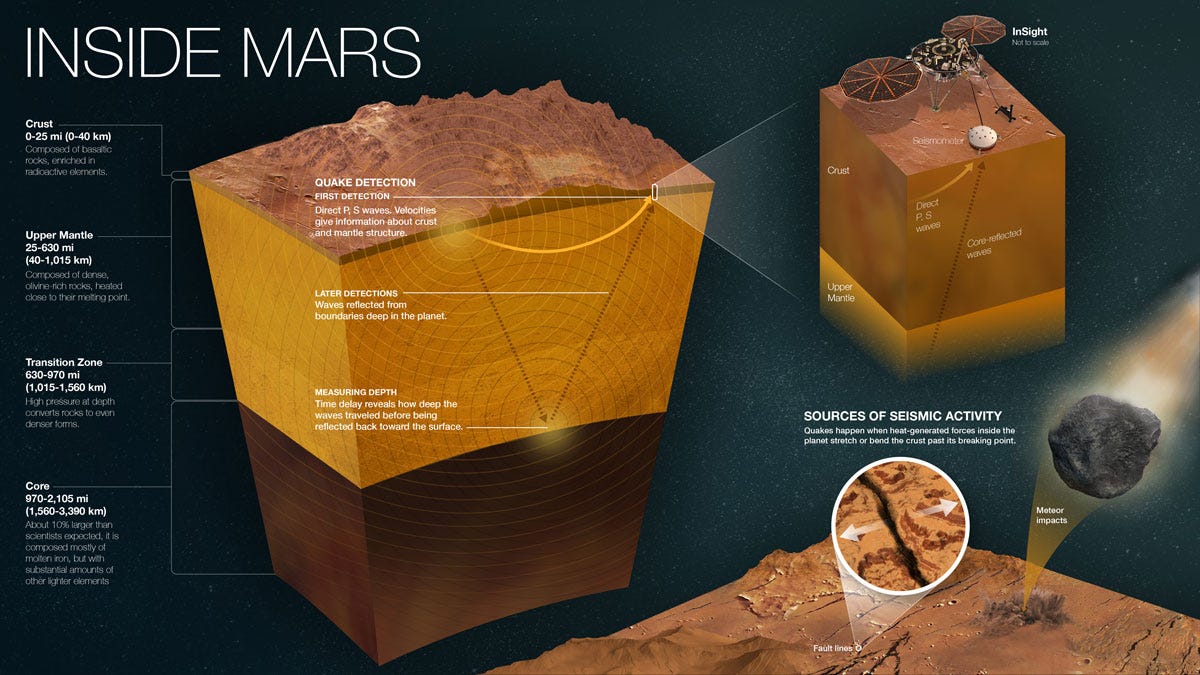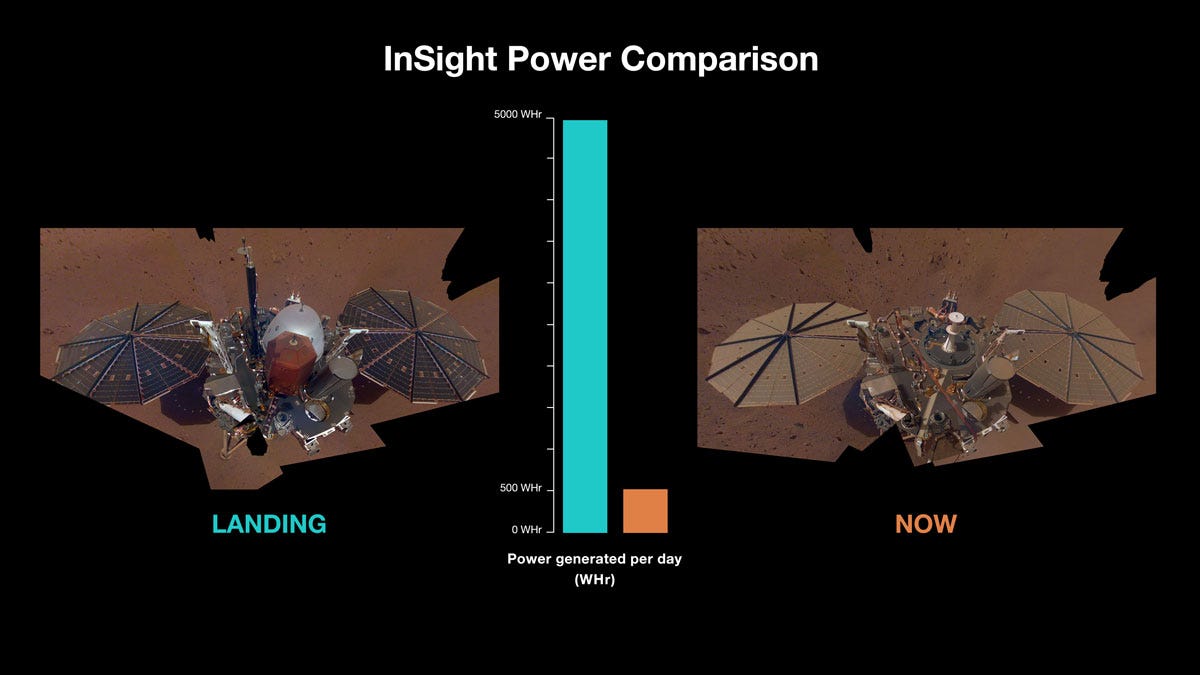This is the second full selfie from NASA’s InSight probe on Mars. Since its first selfie, the module has removed its thermal probe and seismometer, placing them on the Martian surface. A thin layer of dust now covers the spacecraft. Image: NASA/JPL-Caltech.
NASA’s InSight Mars module will end its science mission this summer and will be fully inoperative by the end of the year following a planned power outage, NASA said Tuesday. As the mission draws to a close, scientists are studying the “unprecedented” data Insight has collected from the depths of Mars, as well as its weather and magnetic field.
“Before InSight, the interior of Mars was one giant question mark,” Bruce Banerdt, InSight principal investigator at NASA’s Jet Propulsion Laboratory, told reporters on Tuesday. “We only had a very fuzzy picture of what was going on inside Mars. Now we can actually draw a quantitatively accurate picture. »
And while InSight will slowly fall asleep this year, it continues to collect valuable data. On May 4, InSight detected a magnitude 5 Martian earthquake – the largest earthquake recorded so far, by a factor of 10.

Image: NASA/JPL-Caltech.
Thanks to all the data collected by InSight, scientists can assess the thickness of the Martian crust to within 10 km, as well as the size of its core to within 50 km.
This particular information, explains Bruce Banerdt, “allows us now to go back and examine our models of planetary formation, to see how the planets evolved from a cloud of dust revolving around the sun”.
With these new data, he added, “we’ve already been able to rule out probably two-thirds of existing planetary formation models, just by looking at the size and density of the core and the thickness of the crust. “.
Since landing on Mars in November 2018, InSight – short for Interior Exploration using Seismic Investigations, Geodesy and Heat Transport – has been measuring waves propagating inside the planet using a seismometer. InSight has also brought a probe to Mars to measure the planet’s internal temperature and heat flux. However, the device, dubbed the “mole”, ran into an unexpected layer of crust in the Martian soil and was unable to descend low enough to make the planned measurements.
The problems with the mole were “probably the biggest disappointment of the mission”, says Bruce Banerdt. Yet, he added, the main goals his team set for InSight have all been achieved. In fact, the mission’s primary science goals were achieved in its first Martian year (nearly two Earth years), and the module is now on an extended mission.
Data collected over the past three and a half years, as well as data that InSight continues to collect, are all archived and available to the wider scientific community. They should be valuable “for decades to come,” says Bruce Banerdt.
Why does the mission end now?
As InSight continues to collect data, the module is now covered in dust. So its two solar panels about 2.5 meters wide produce much less energy than at the beginning. At the start of its mission, InSight’s solar panels produced about 5,000 Wh per Martian day, or ground, enough to power an electric furnace for an hour and 40 minutes. Today they produce around 500 Wh per floor, which is enough to power the same electric oven for just 10 minutes.

Insight’s first full selfie, which shows clean panels, was taken in December 2018; the dusty selfie (right) is from images taken in March and April 2019. Image: NASA/JPL-Caltech.
On top of that, seasonal changes on Mars will make it even more difficult for solar panels to generate power. Over the next few months, there will be more dust in the air, which will reduce sunlight.
This spring, NASA will therefore operate the seismometer continuously, and its activities will decrease until it is turned off towards the end of the summer. Meanwhile, InSight’s robotic arm will soon be placed in a resting position, called a “retreat pose”, which will allow it to take pictures. When InSight is at very low power, it will still be able to take images until it is completely shut down at the end of the year.
Source: ZDNet.com
